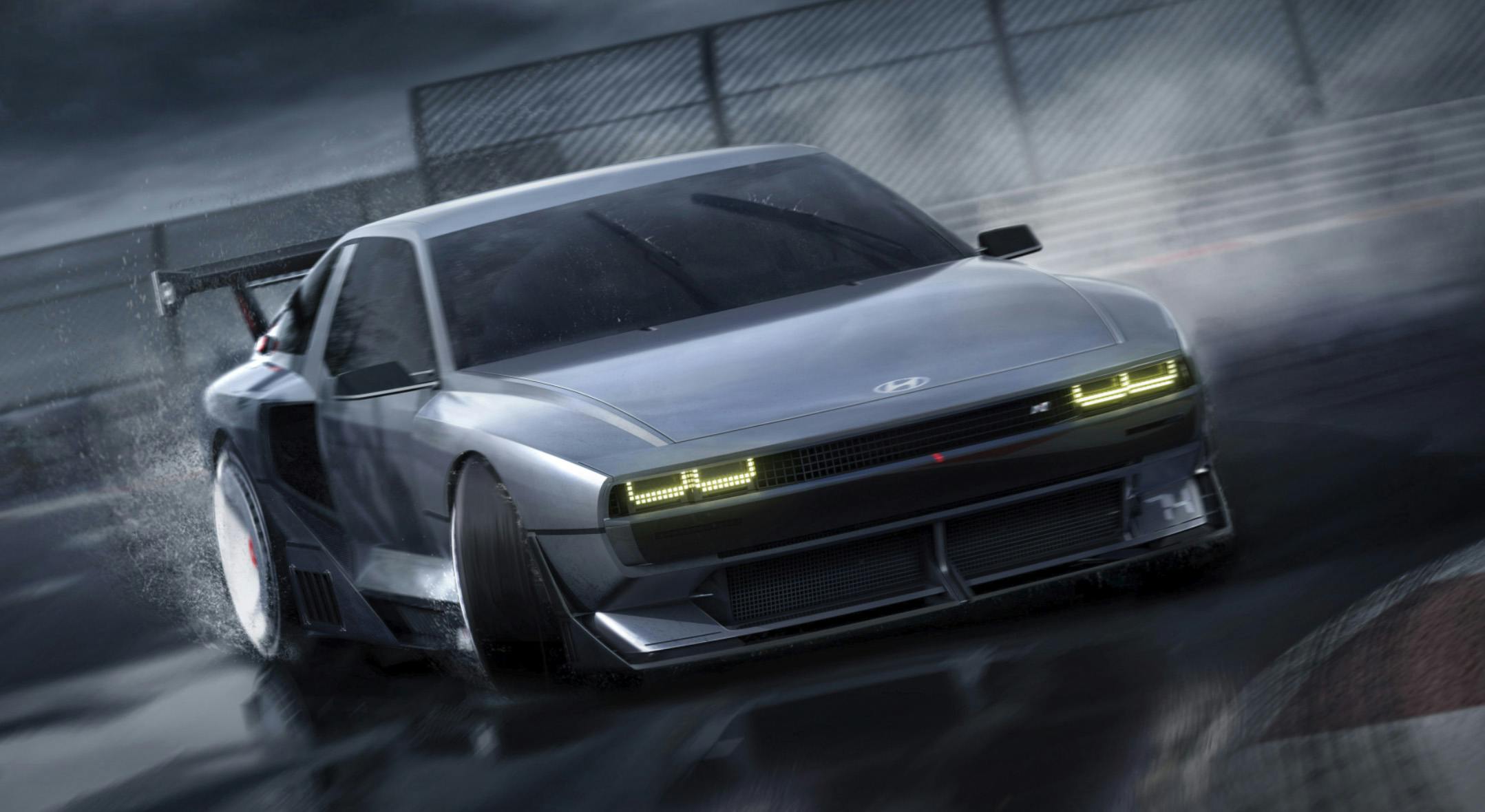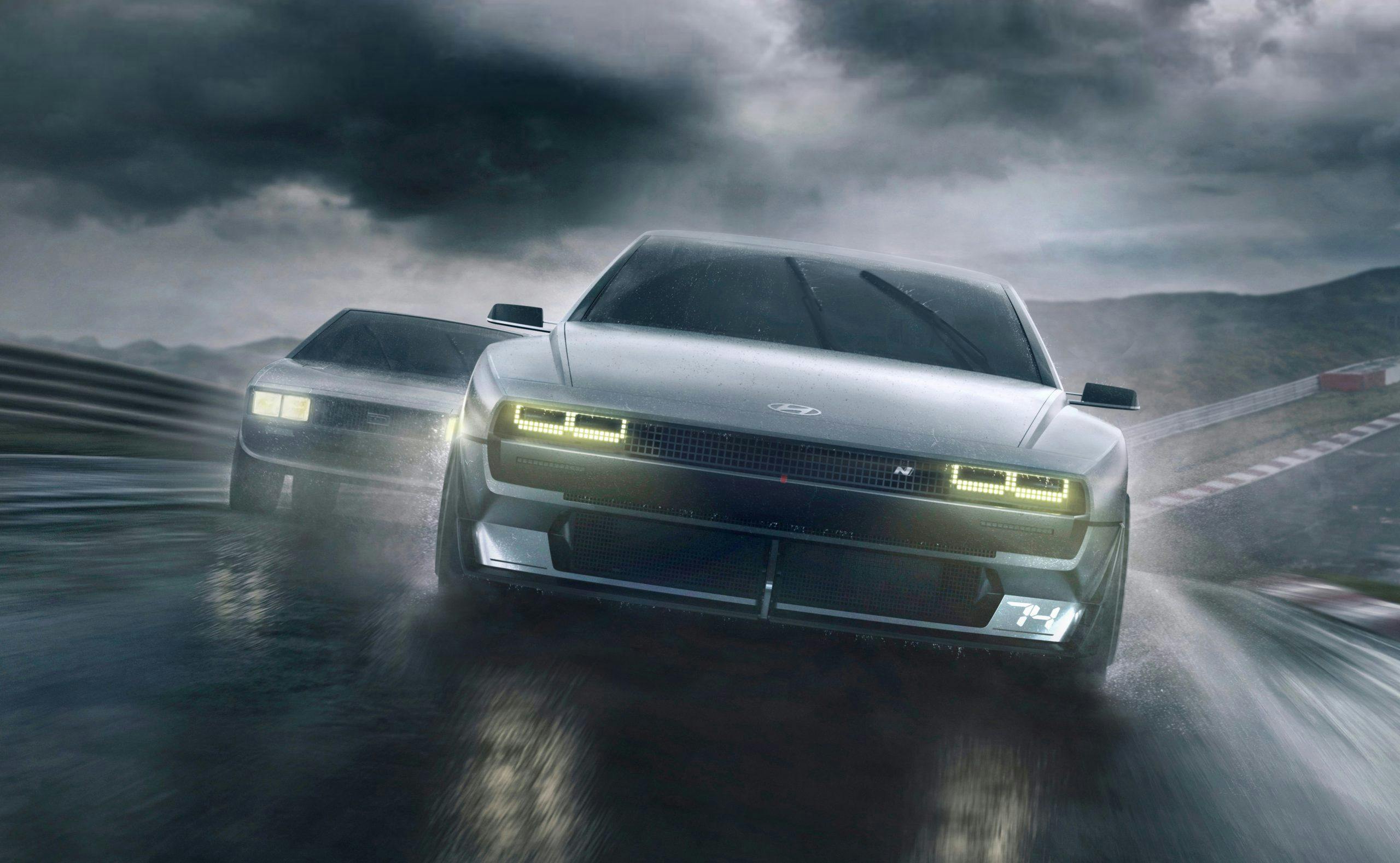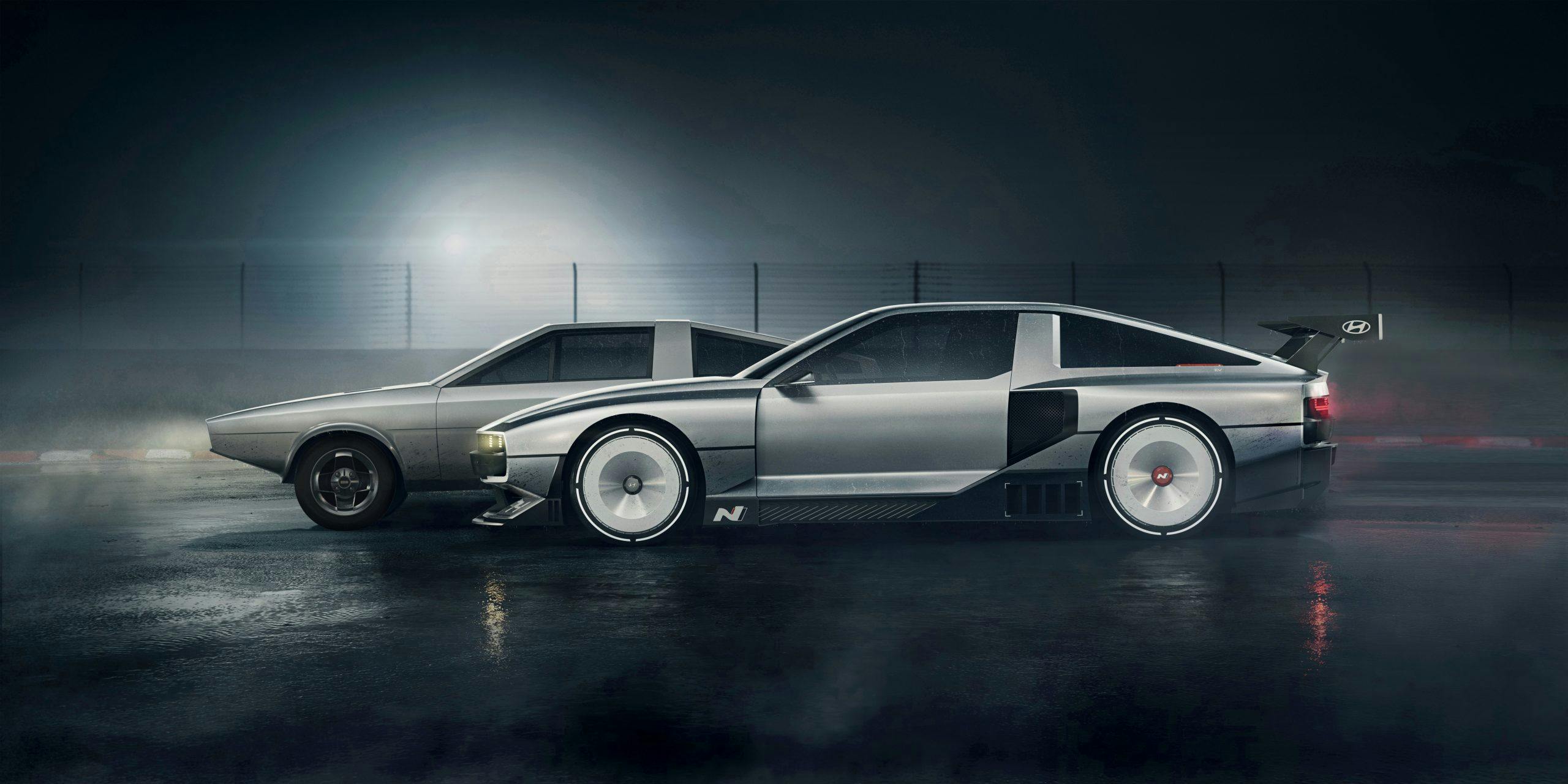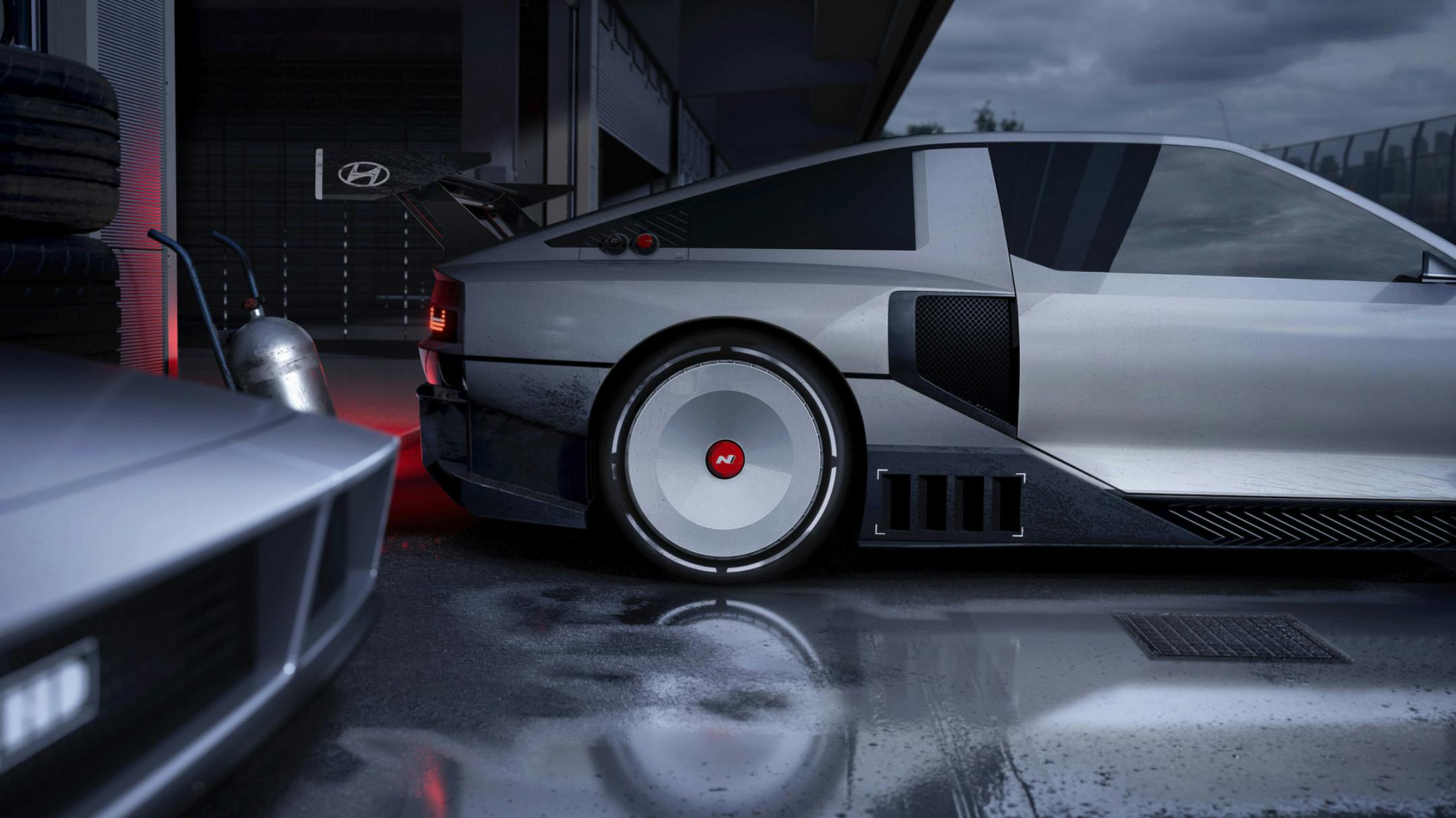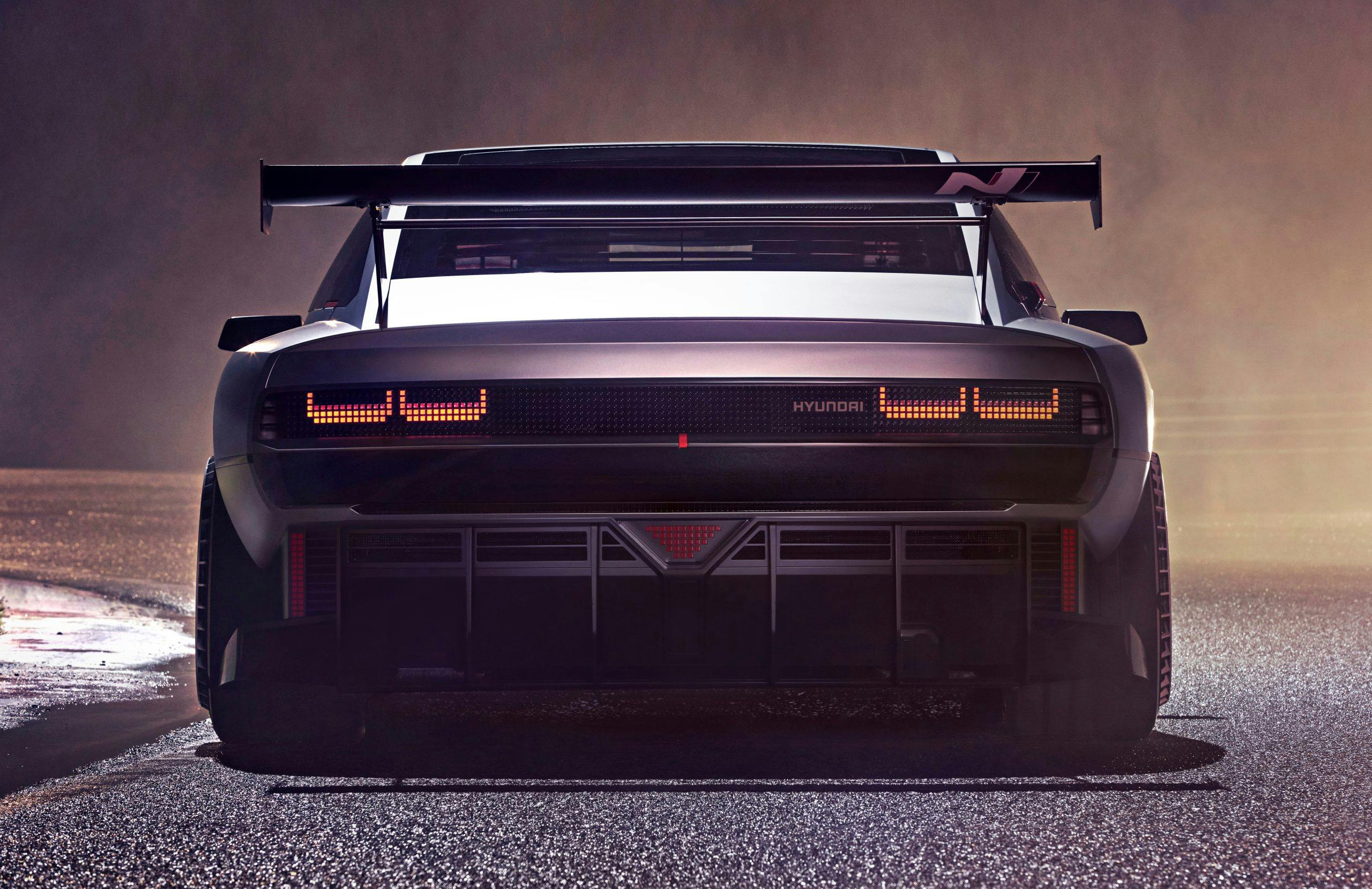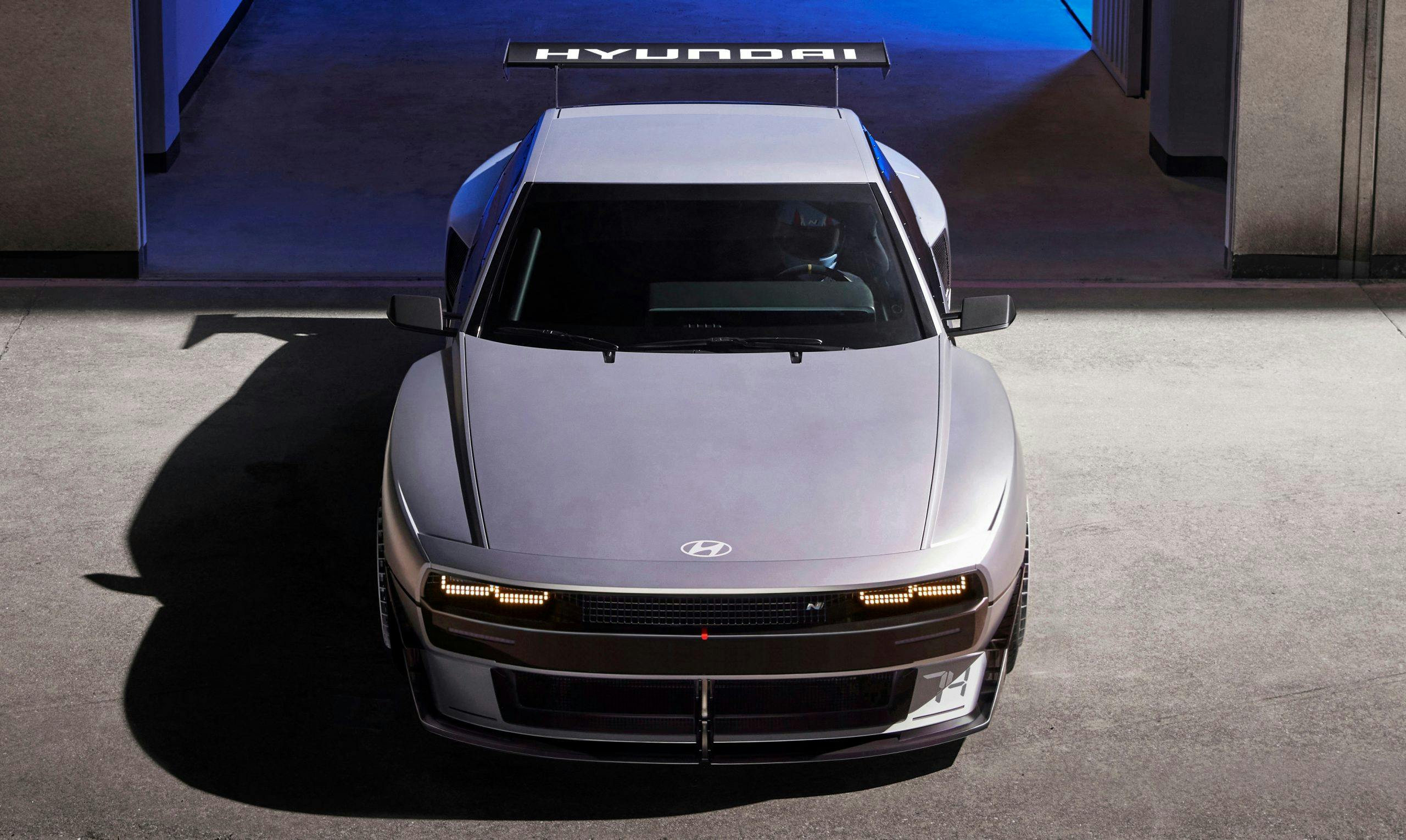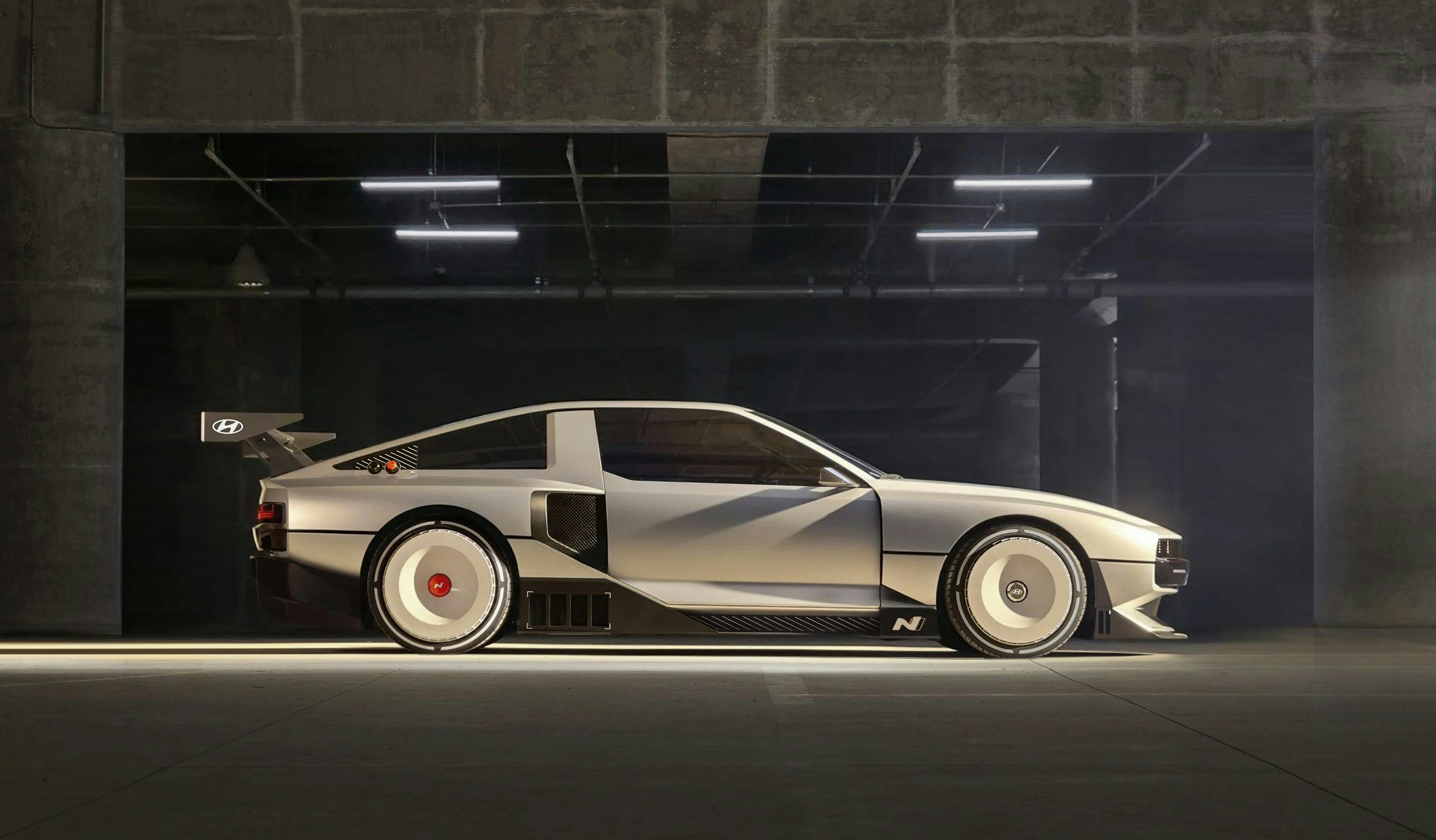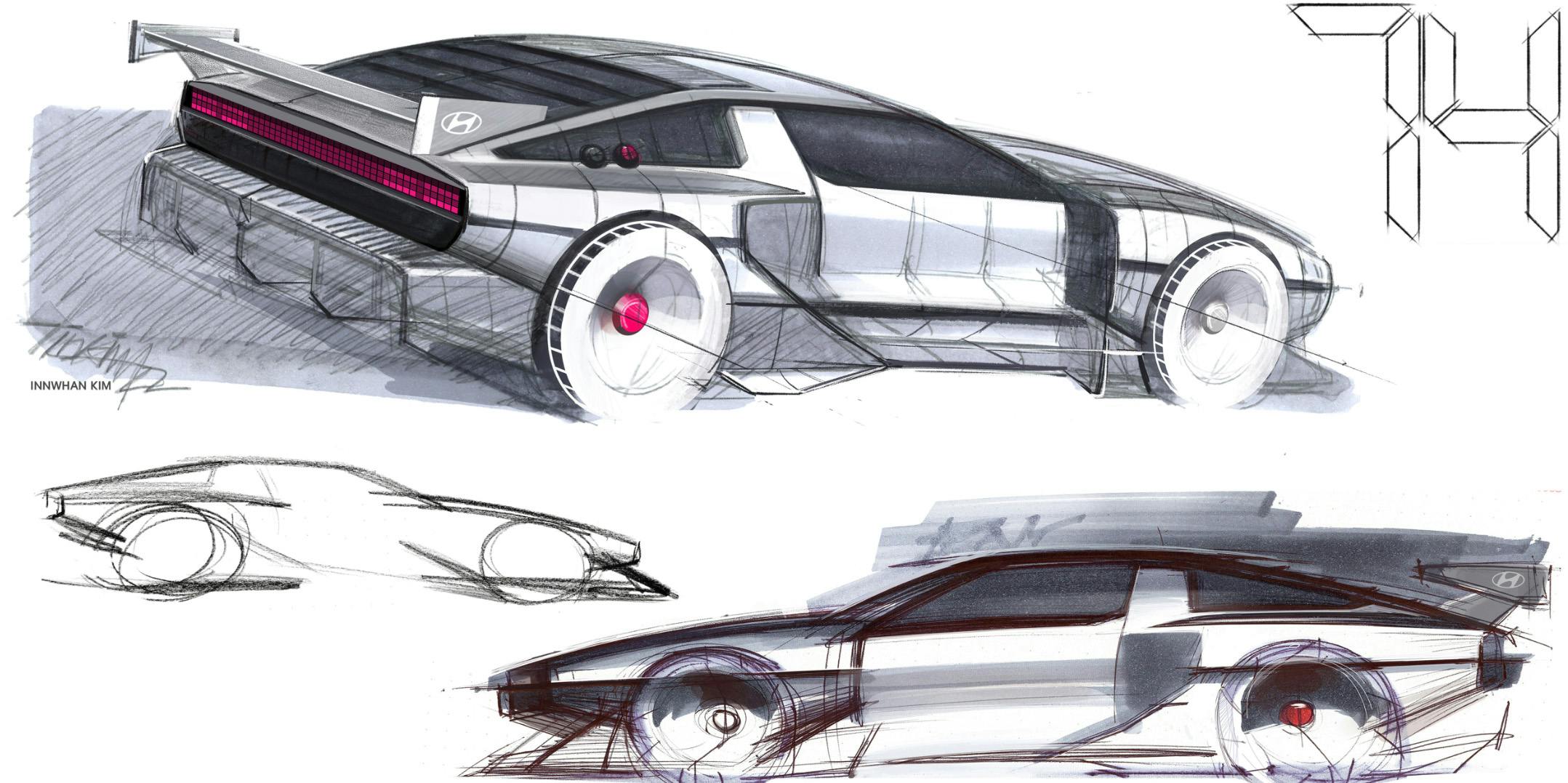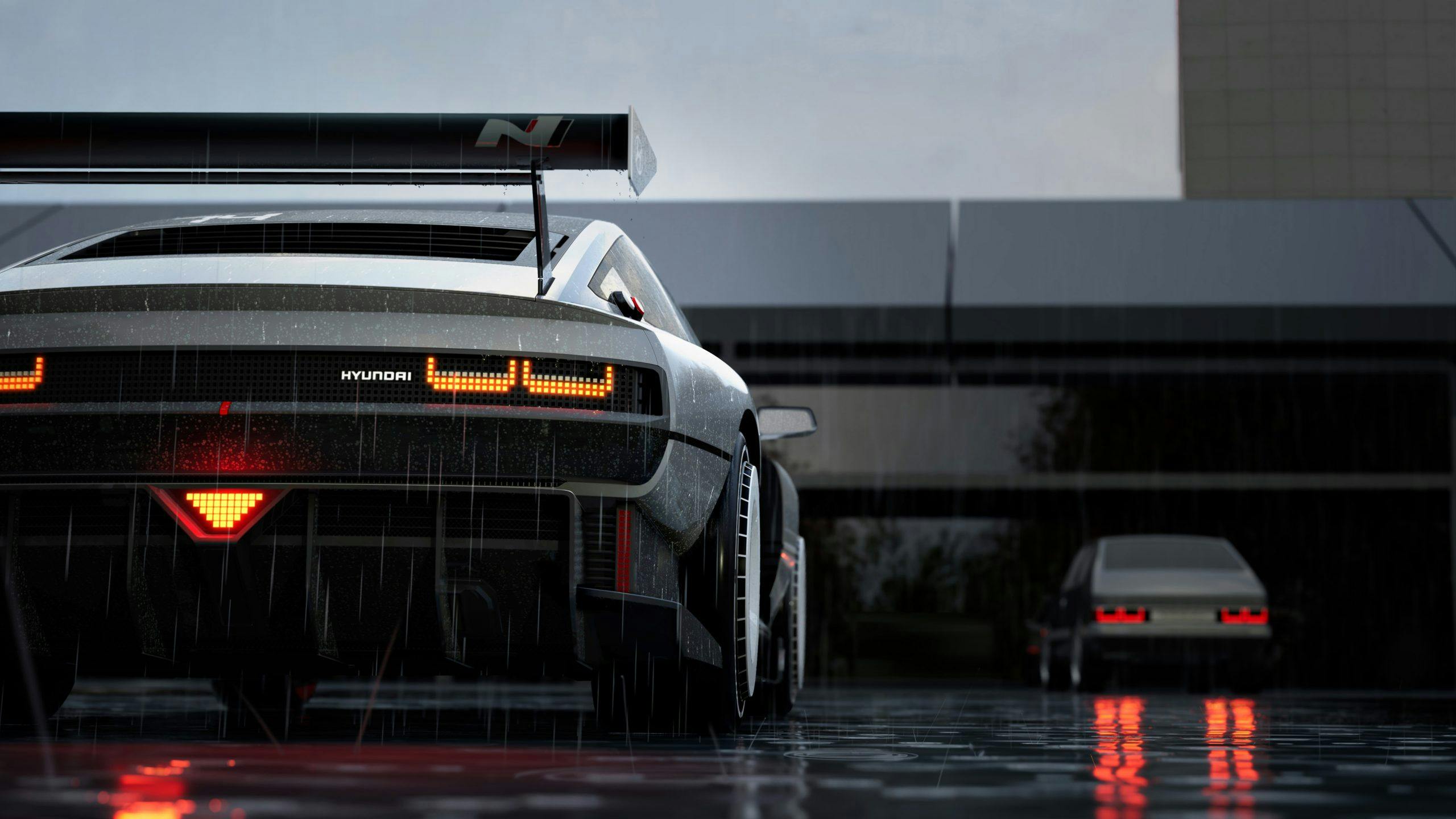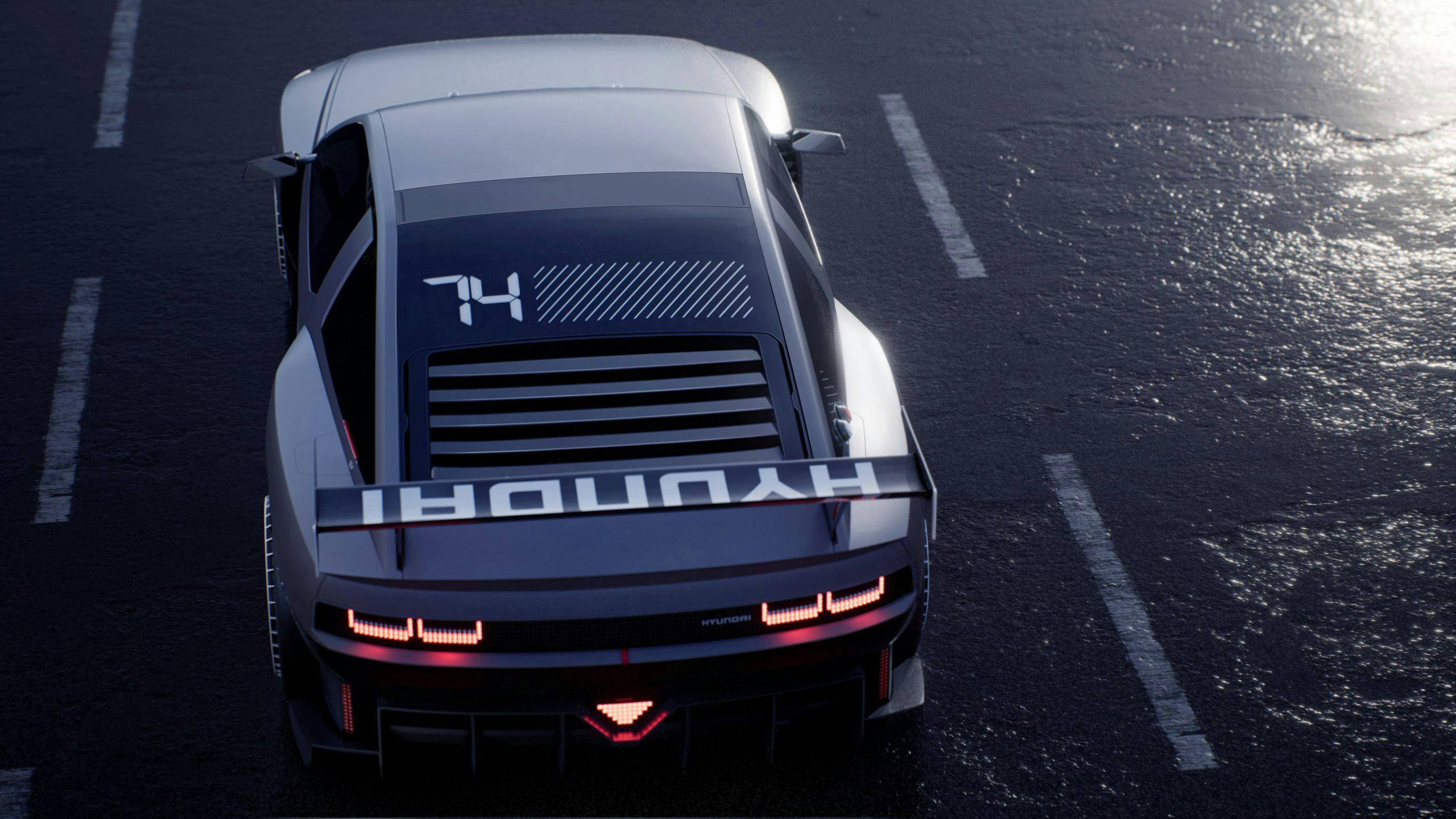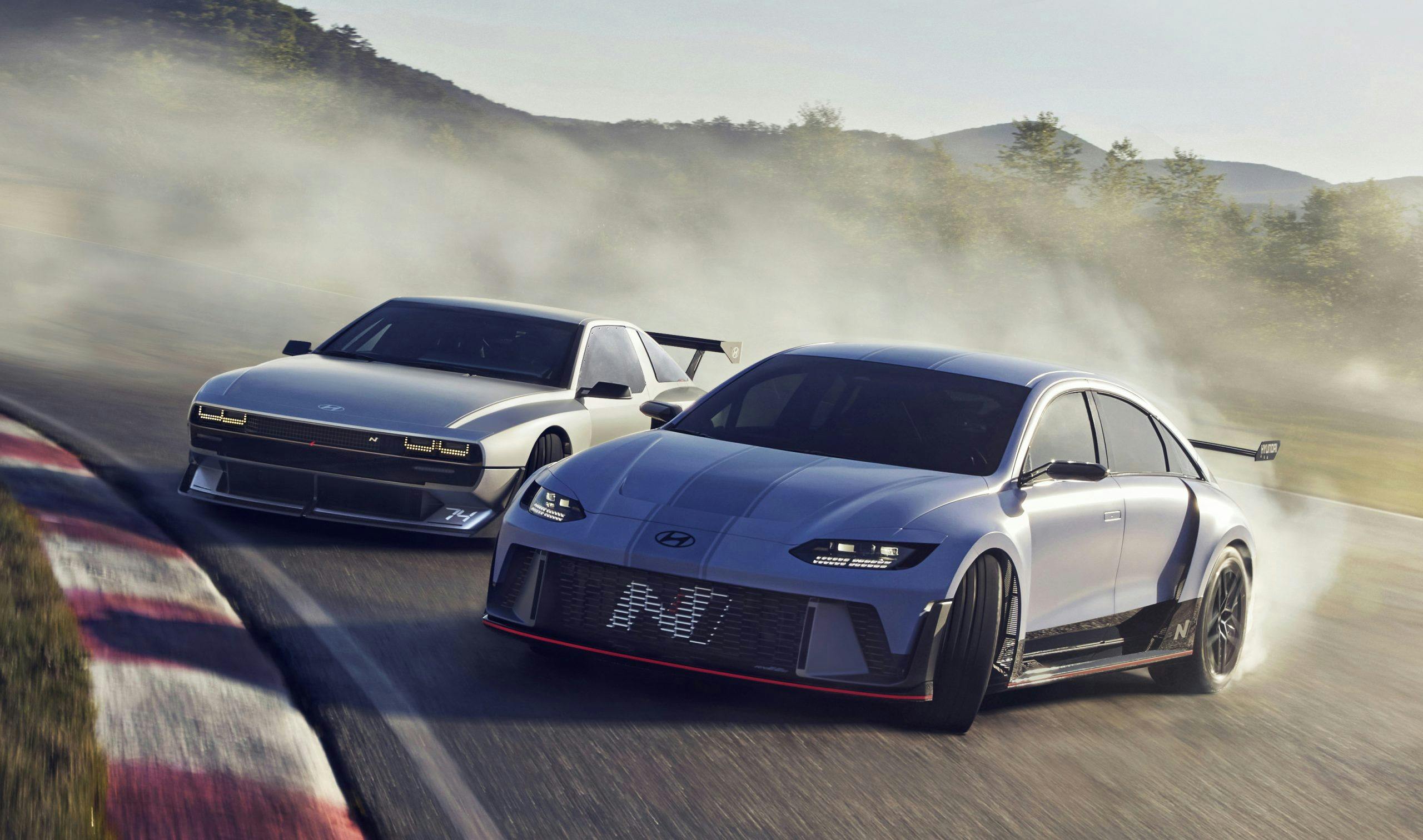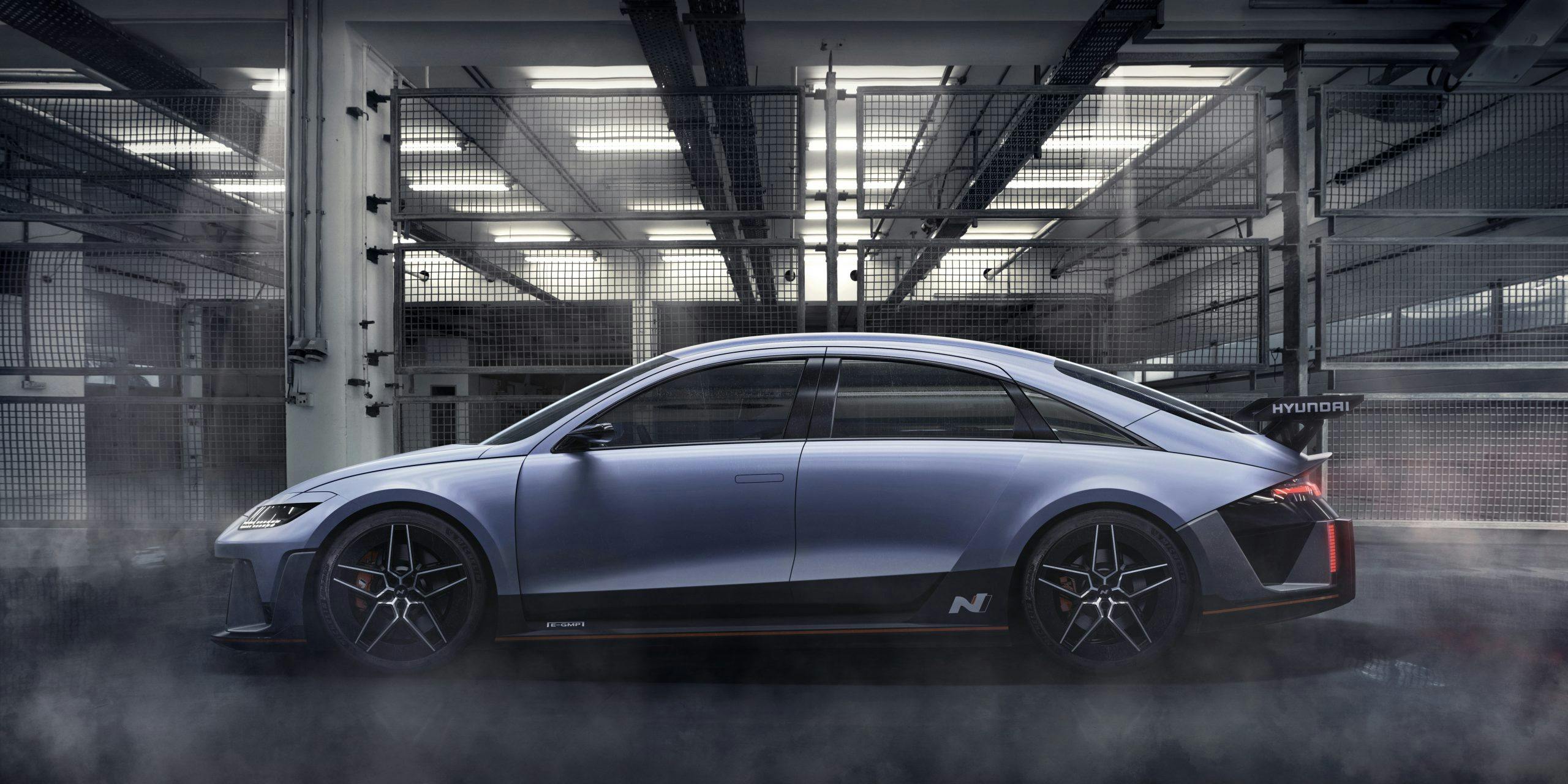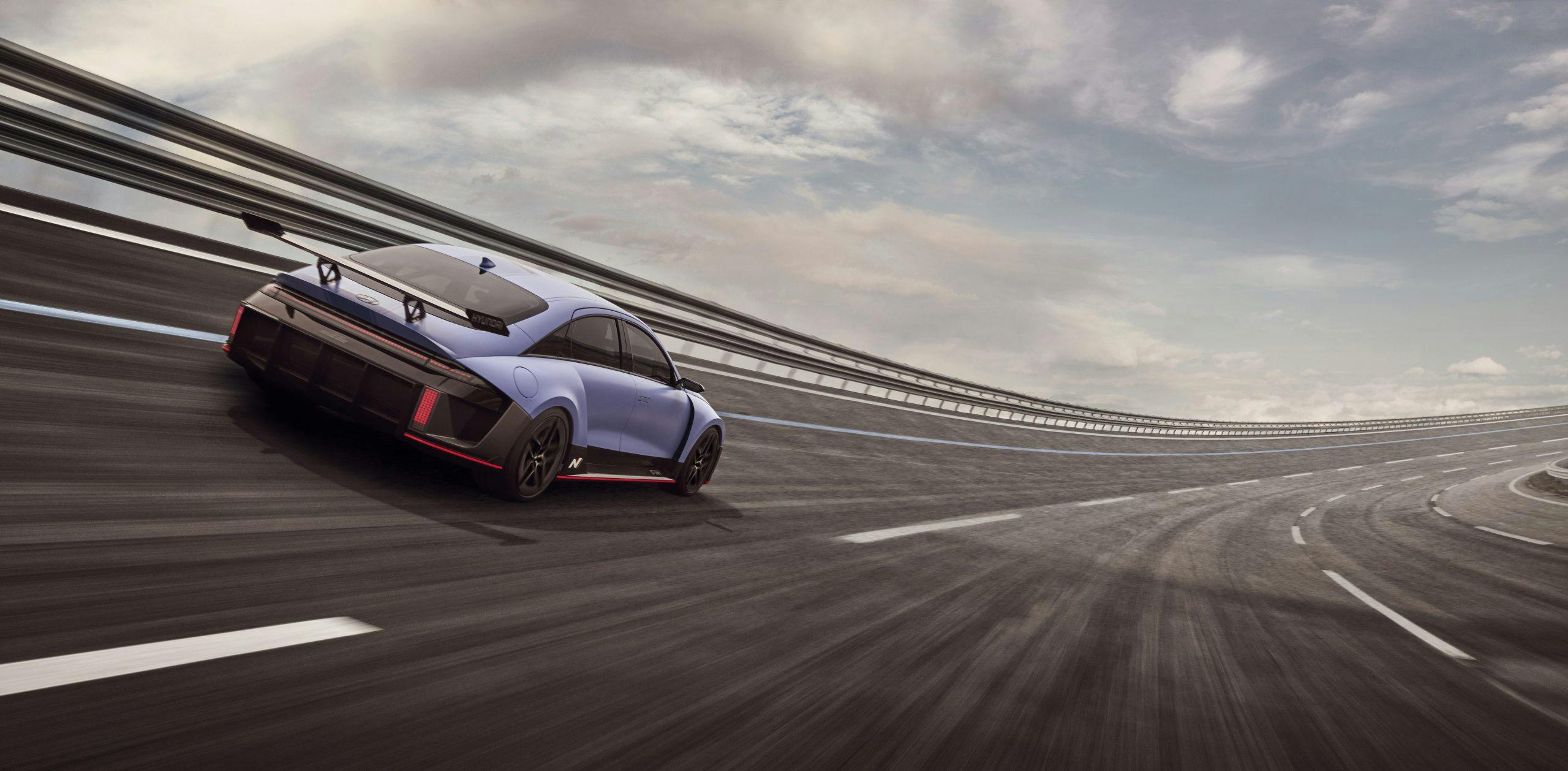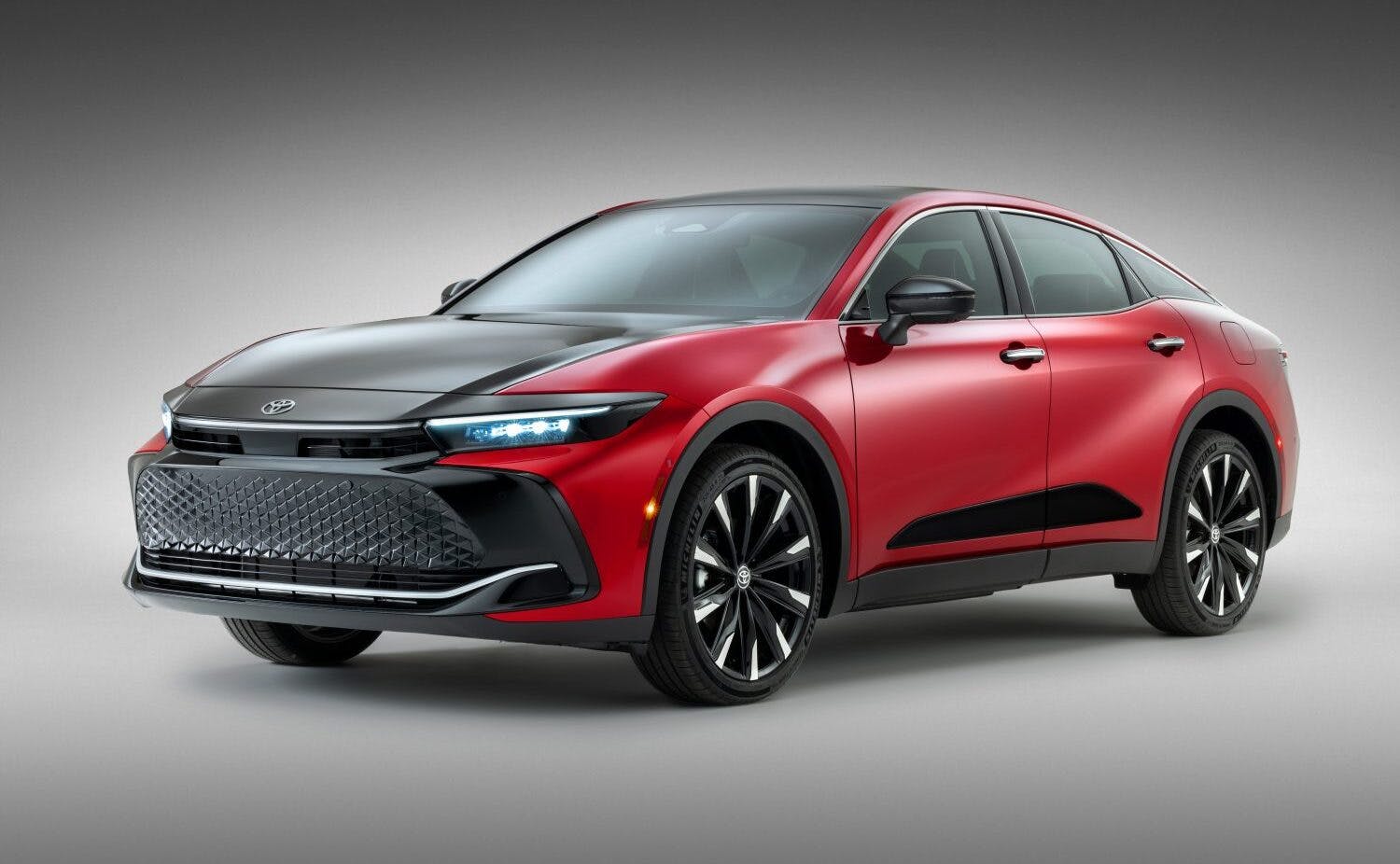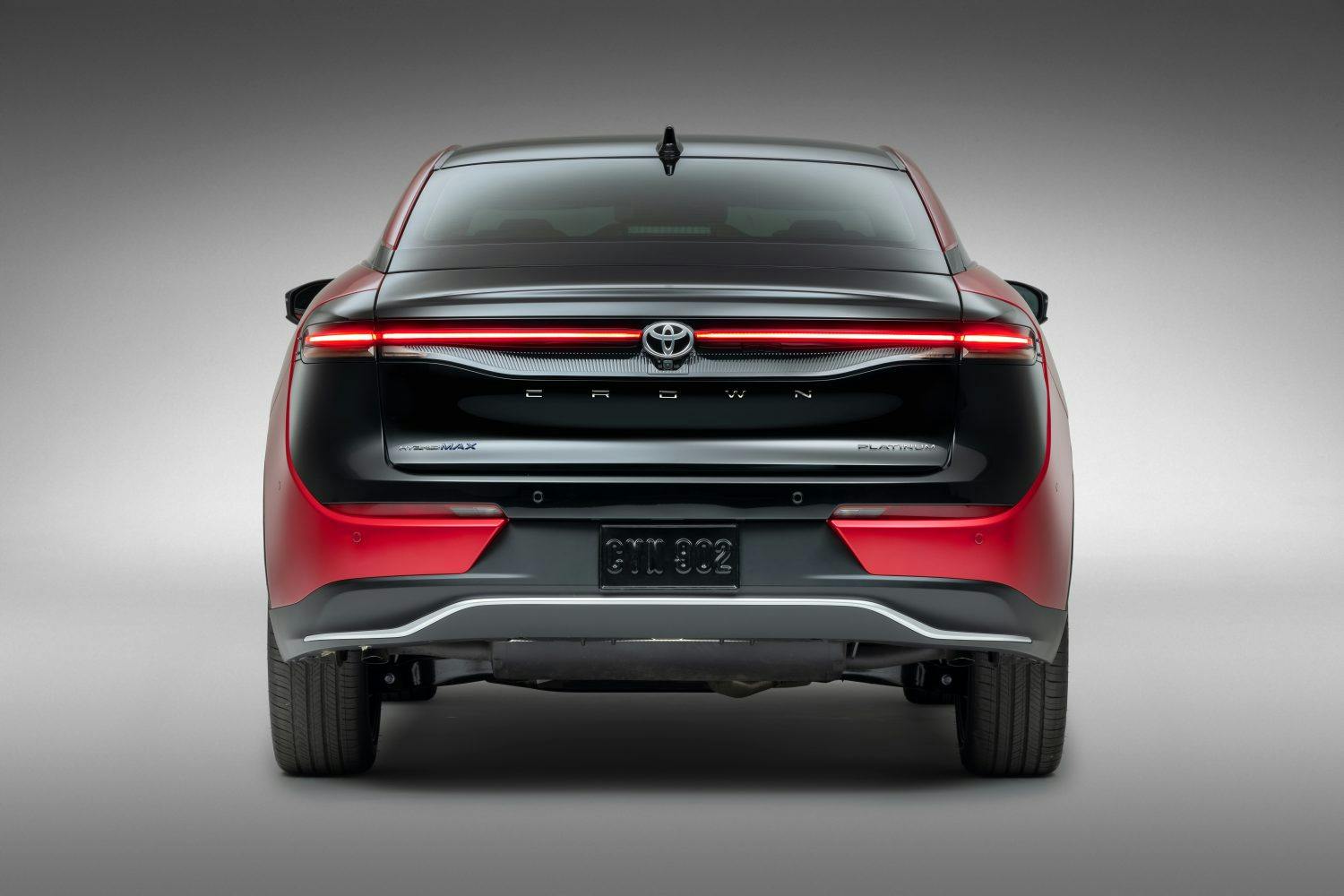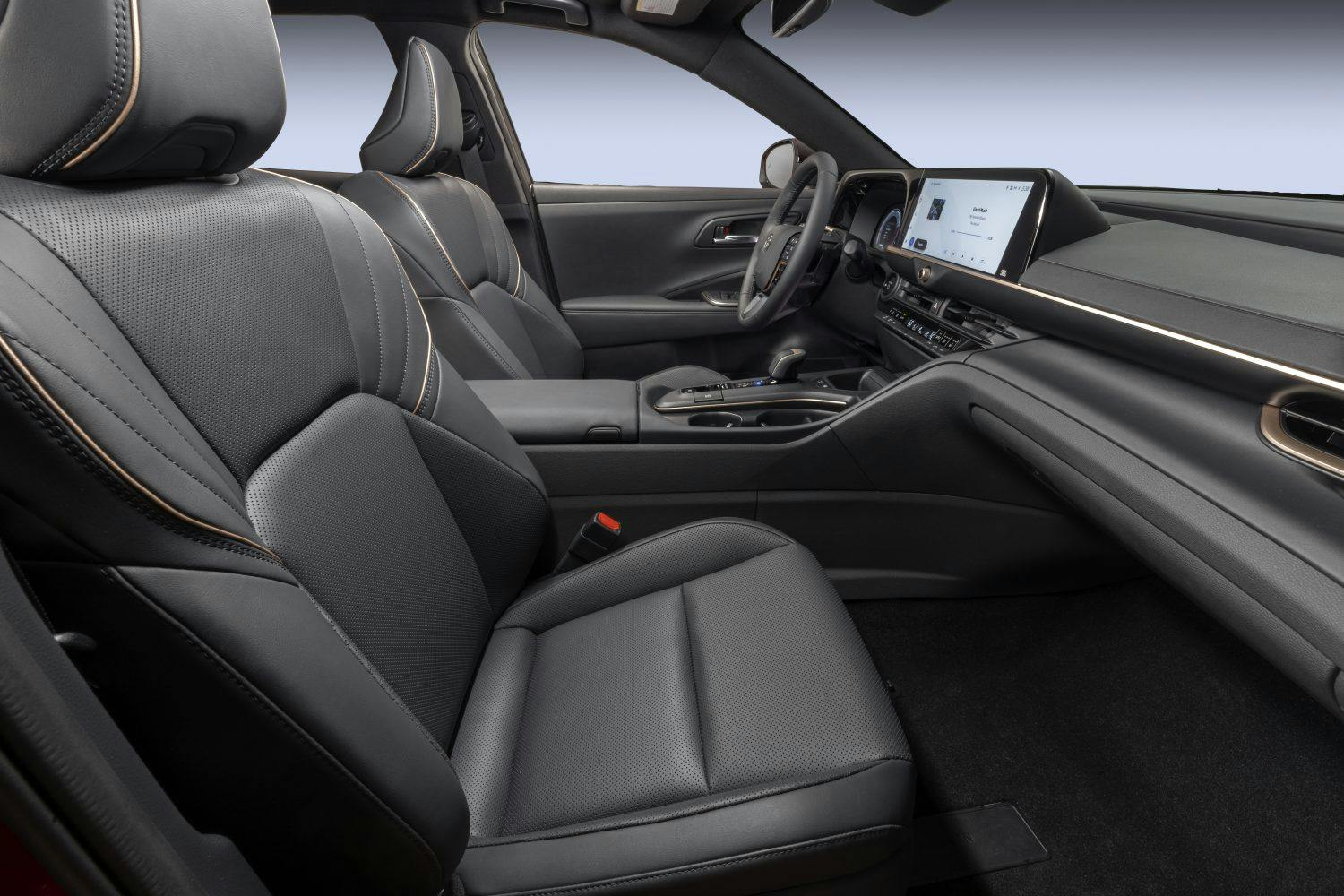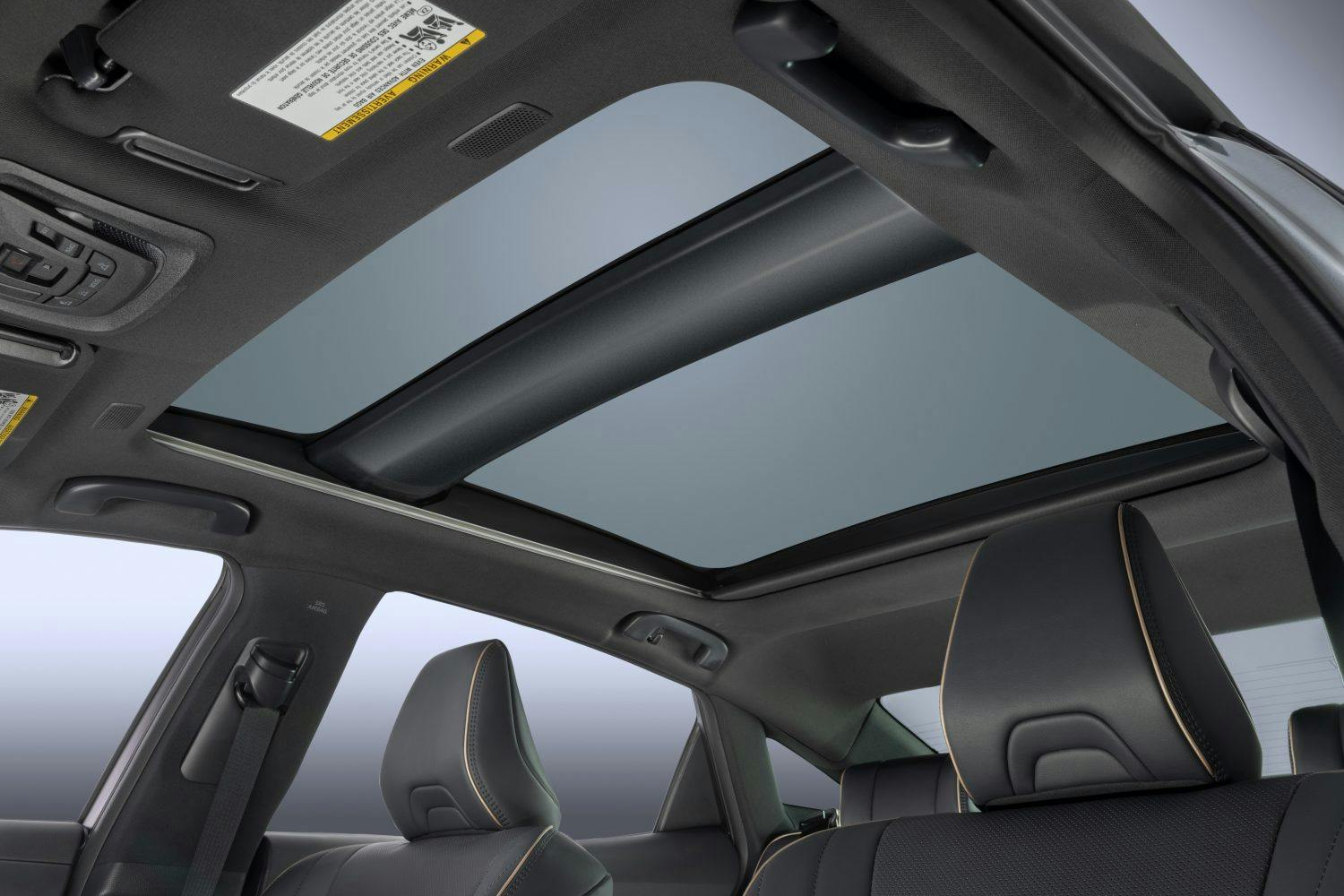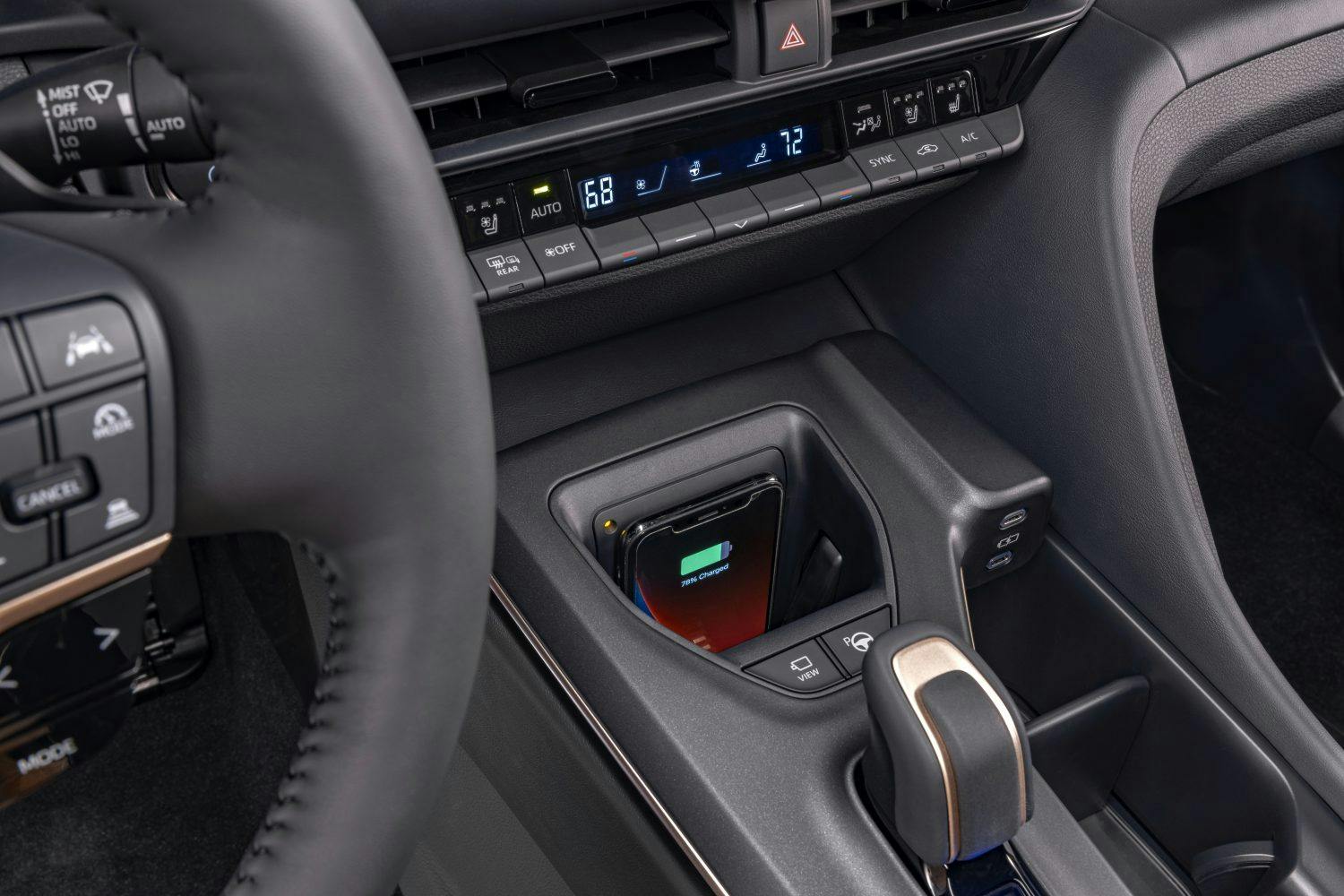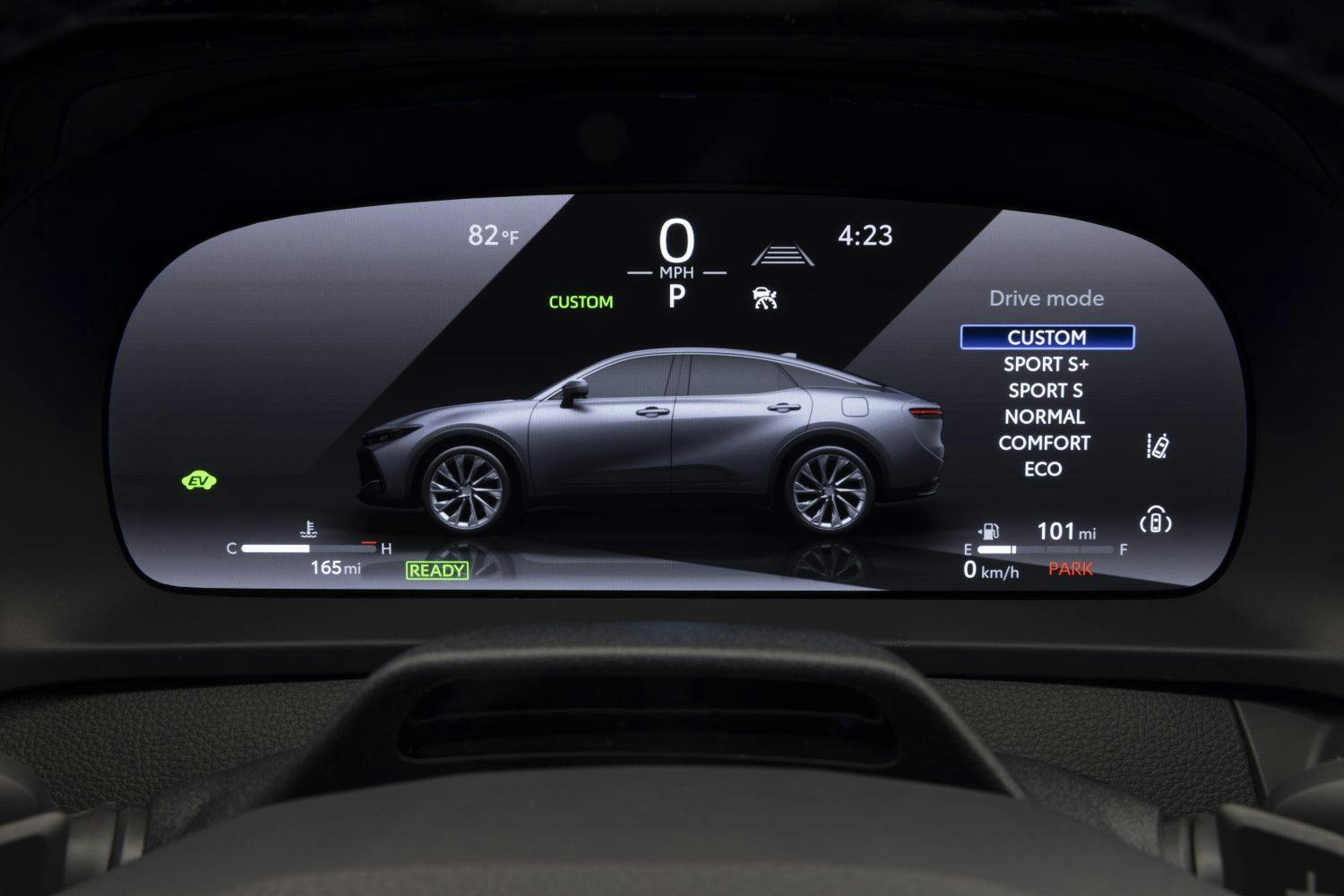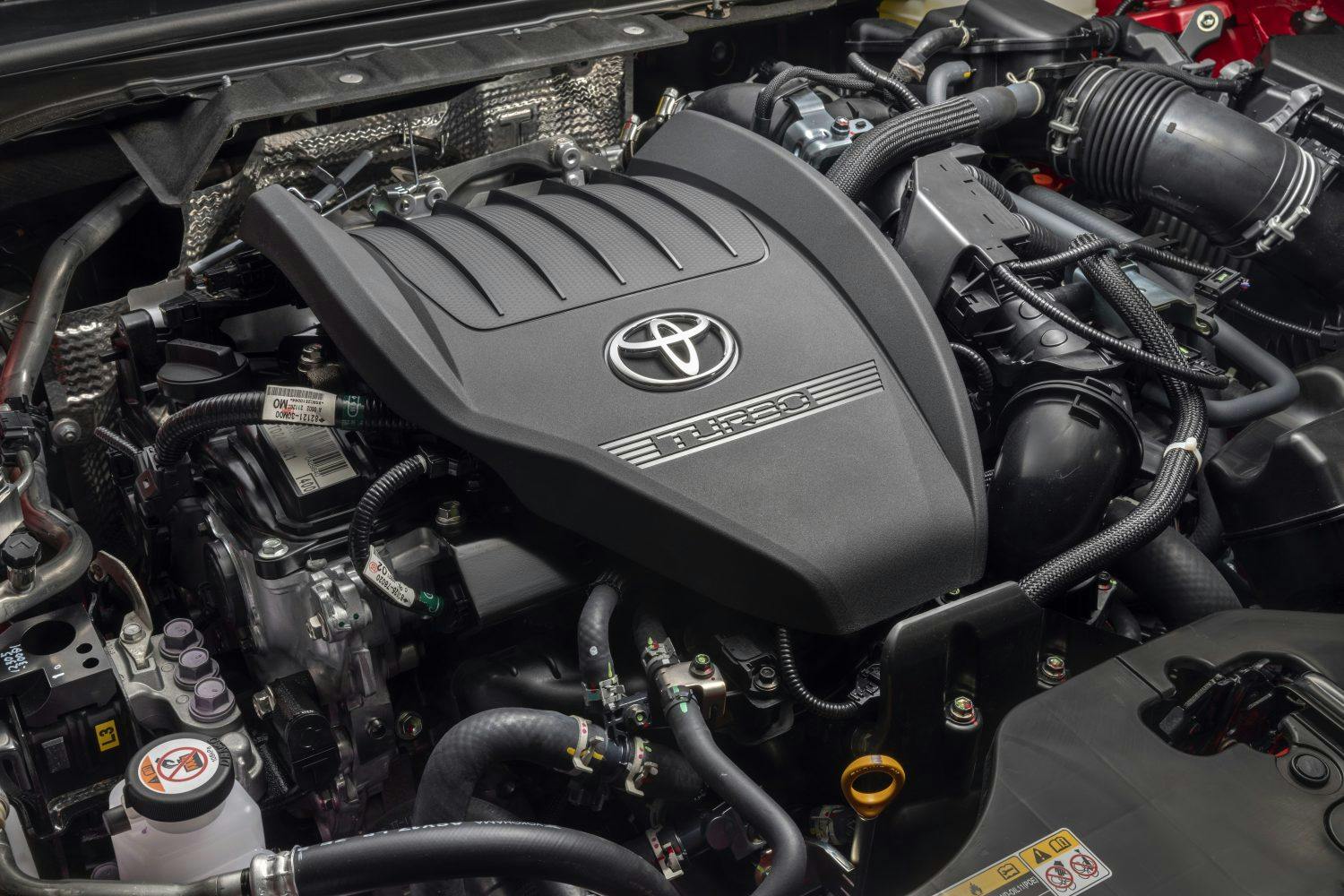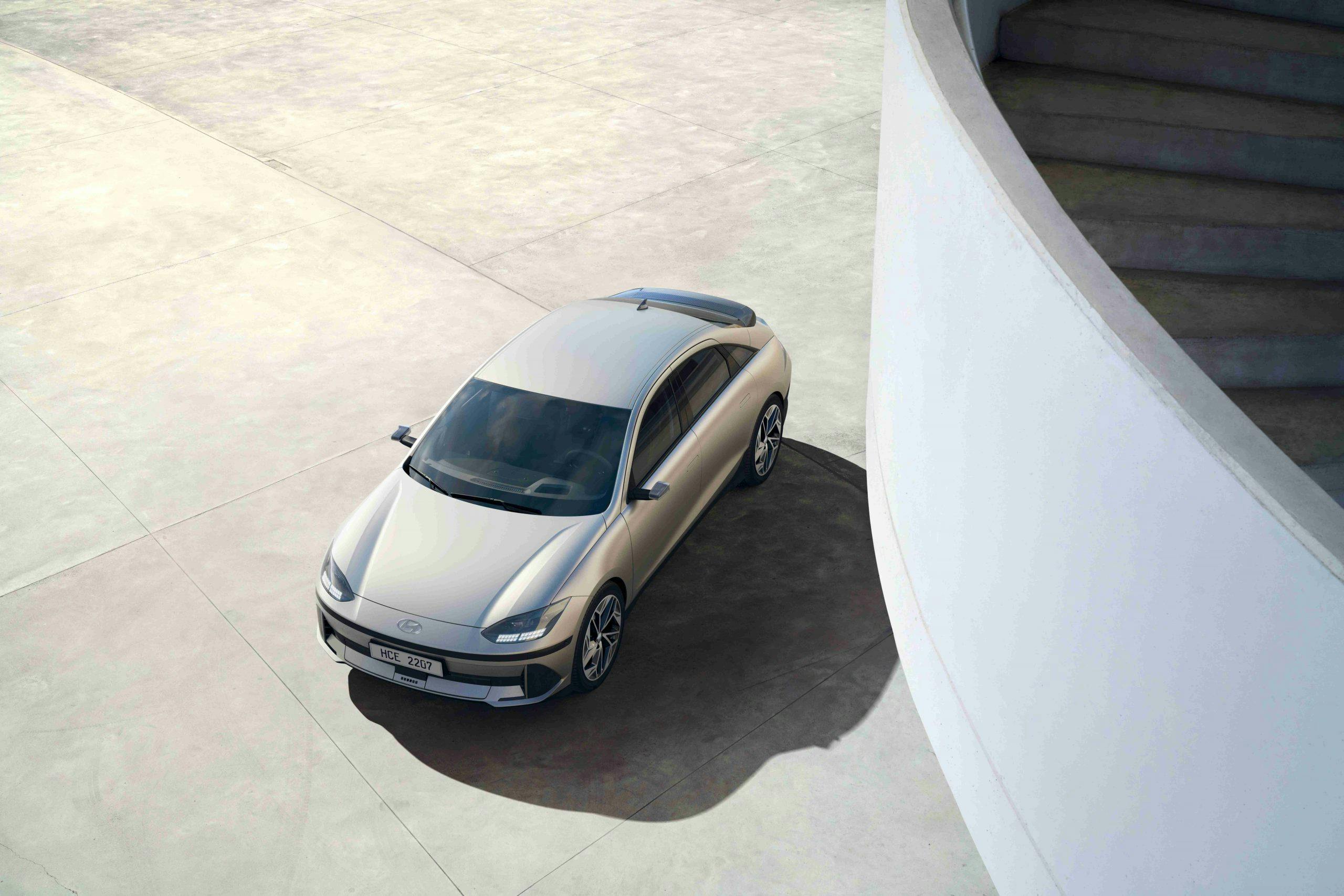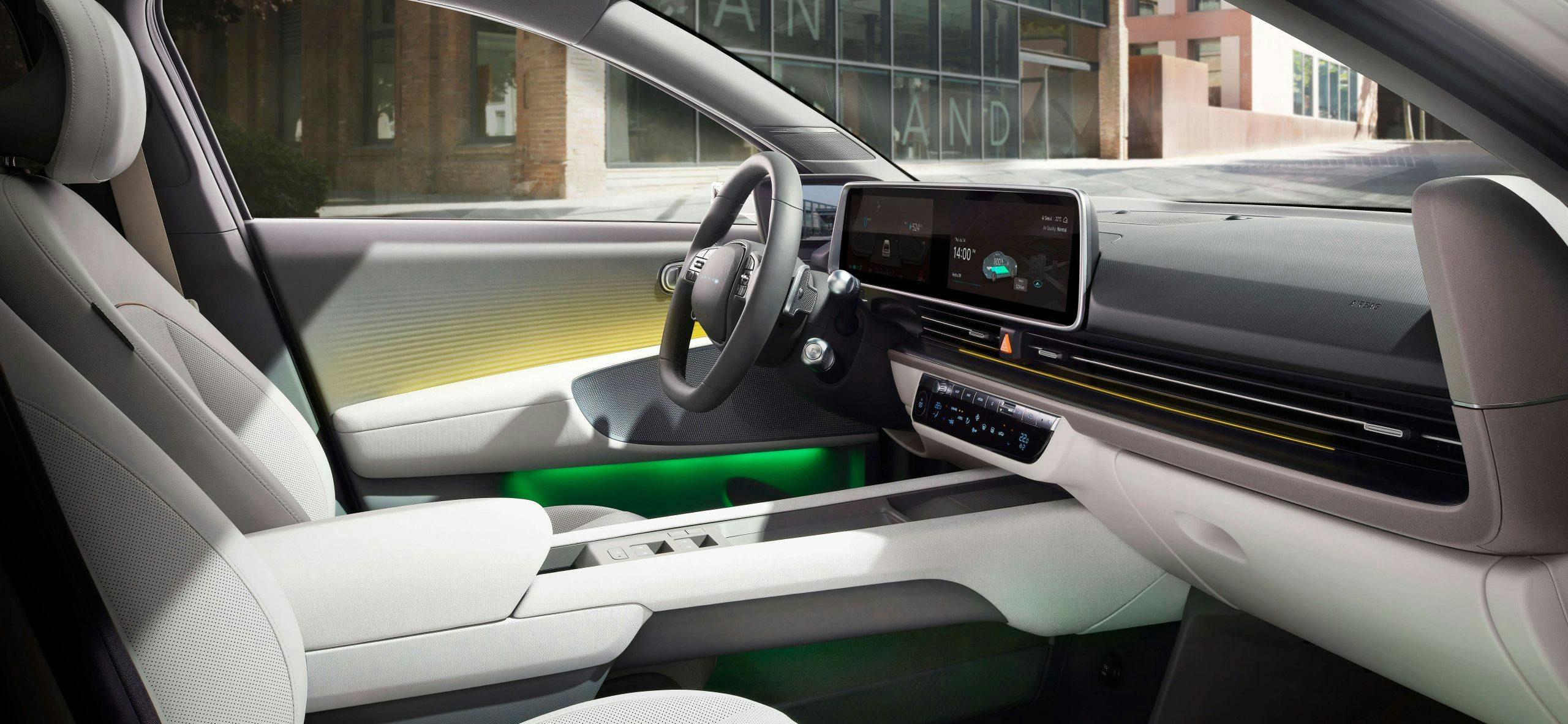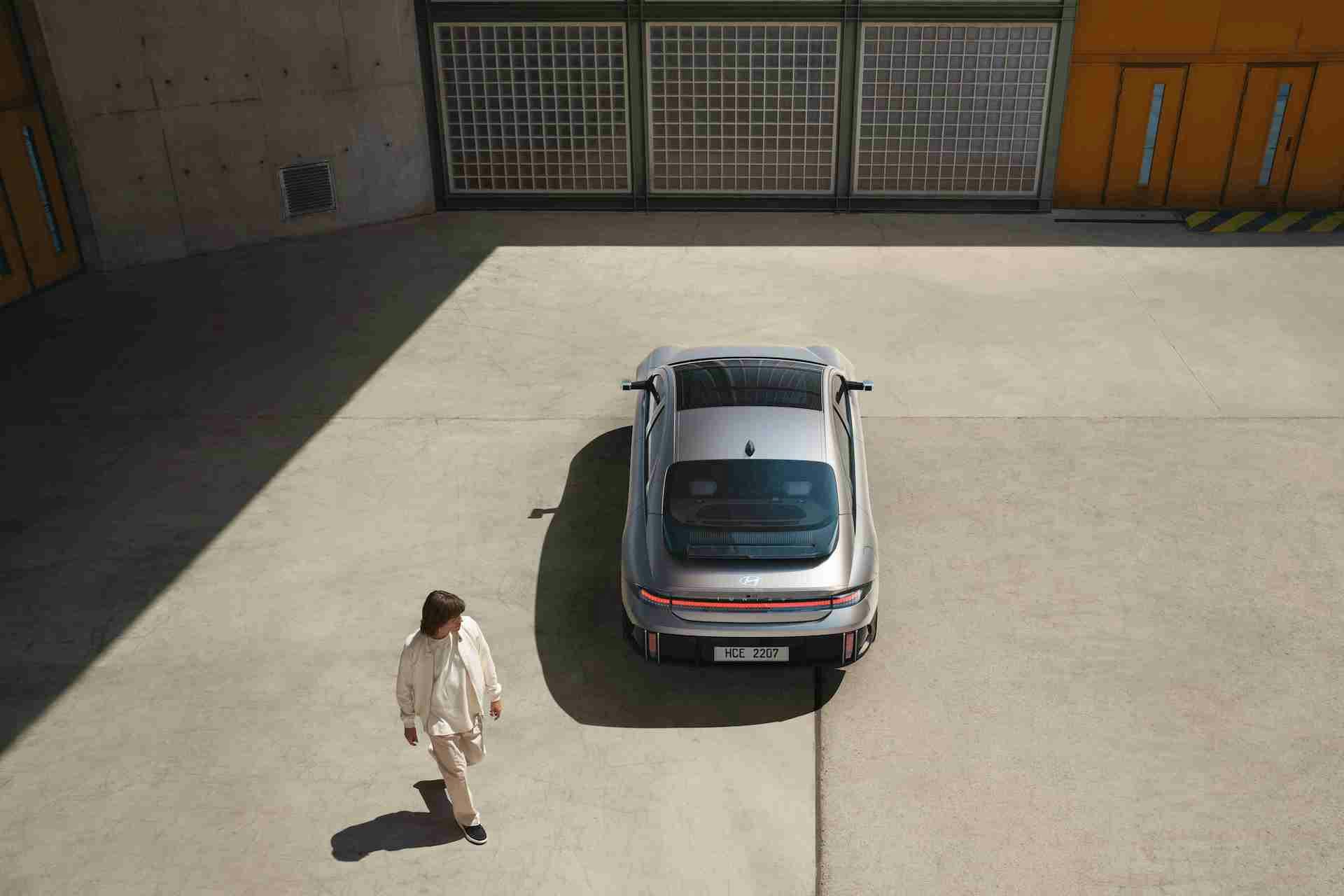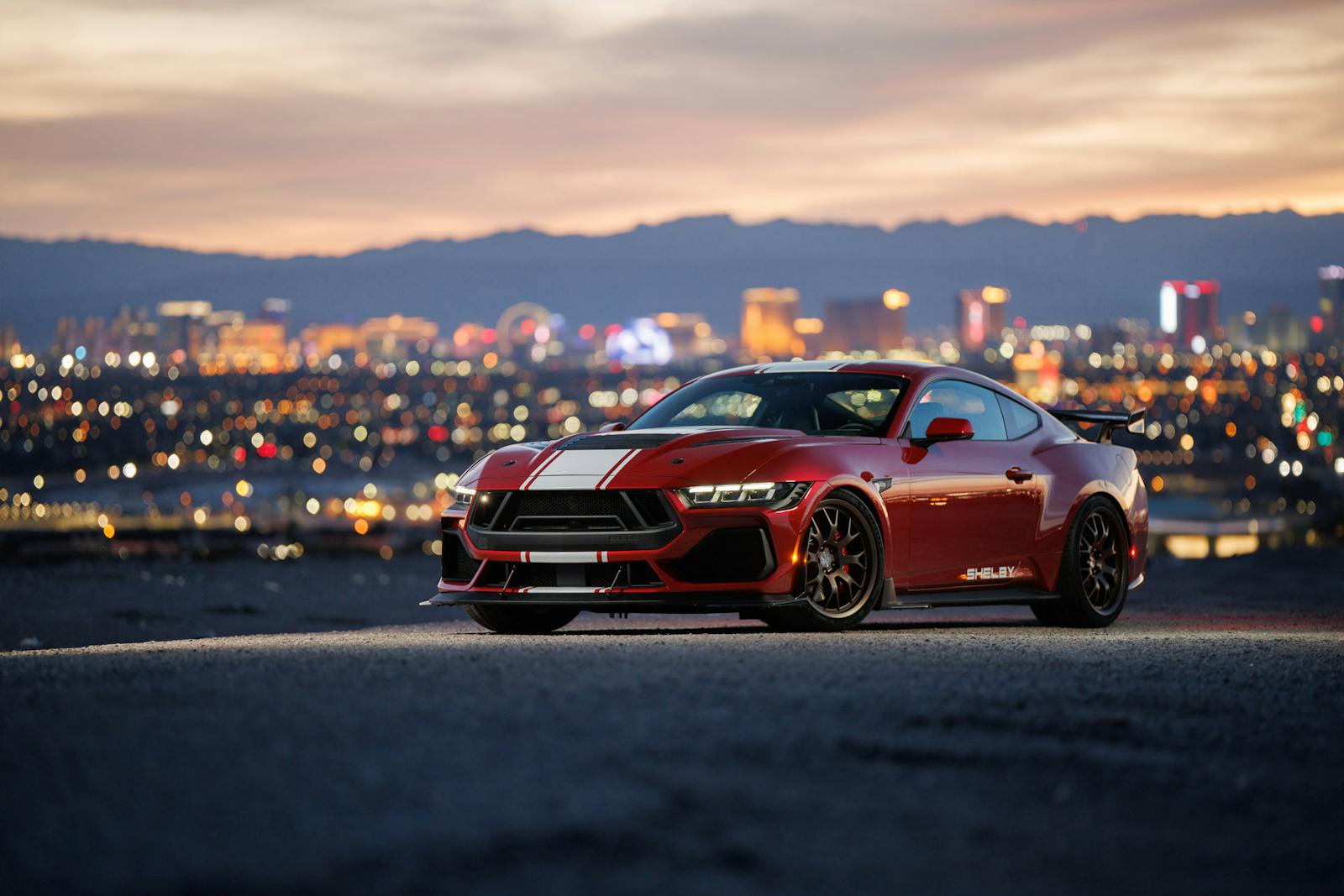Hyundai’s brutally beautiful, 680-hp hydrogen coupe, renovations for NCM, Donkervoort to U.S.
Hyundai’s drift-happy, 680-hp hydrogen coupe is brutally beautiful
Intake: Hyundai’s N division has unleashed a twin-forked lightning bolt of electric performance. Following the announcement that it will release its first EV, the Ioniq 5 N, in 2023, the Korean brand has previewed two additional concepts that are right at the edge of the electric envelope. First up is the N Vision 74, which Hyundai says pays homage to the Giugiaro-designed Pony Coupe concept from 1974, although we definitely see elements of Pininfarina’s Lancia 037 in this brutally beautiful coupe. The N Vision 74 is described as a “rolling lab” with a combination of a hydrogen fuel cell and a 6.24 kWh battery sending 500 kW (680 hp) to the rear wheels — hence the plumes of tire smoke in the images. Hyundai claims the car also has a range of over 400 miles and can be refueled in just five minutes.
The RN22e looks like a more realistic near-future proposition, however. Based on the new Ioniq 6 (see below), it gets flared wheel arches to house bigger wheels and tires, aggressive aero front and rear and stiffer, lower suspension. It’s all about turning the Ioniq 6 into a “corner rascal” says Hyundai. There are four-piston monoblock calipers and 400-mm hybrid disc brakes, and all-wheel drive from two electric motors with a combined 585 hp. Other gizmos to enhance the driving fun include N Sound + which uses interior and exterior speakers to add to the aural entertainment, and N e-shift which synthesizes gear shifts. “N is moving forward to set new standards in sustainable high performance. We enthusiastically start this new chapter of electrified high-performance and will pursue this goal by using our creativity, engineering expertise and competitive spirit,” says Till Wartenberg, vice president of N brand management and motorsport.
Exhaust: Hyundai’s N division is so dedicated to performance that it has a permanent facility at the Nürburgring, developing its cars on The Green Hell on an almost-daily basis. Even we mourn the loss of the Veloster N, we are thrilled to see just how big Hyundai is dreaming. Who would ever have dreamed that the erstwhile king of the rental lot would become the champion of tire-smoking performance in the age of alternate fuels? — Nik Berg
Tornado damage spurs $2.4M in improvements to NCM Motorsports Park
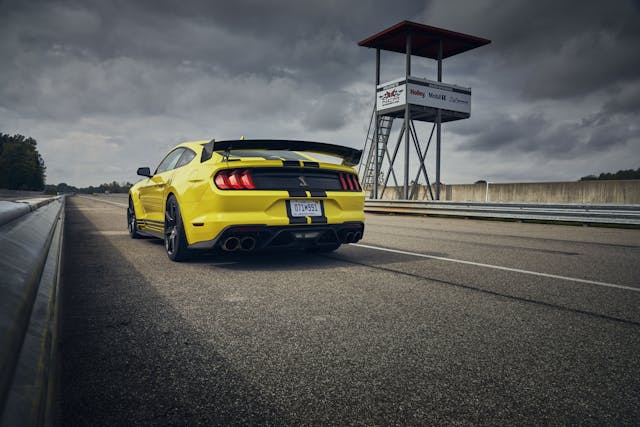
Intake: Bowling Green, Kentucky’s NCM Motorsports Park was hit by an EF-3 tornado in December 2021, and progress on repairs appeared to have stalled until yesterday, when we learned that repairs are evolving into large-scale renovations of the facility. Sharon Brewer, president and CEO of National Corvette Museum, stated that the planned improvements will take the facility to the next level, including additional indoor and outdoor event spaces, bar and restaurant offerings in the track observation areas, and upgraded garage facilities.
Exhaust: NCM Motorsports Park was a compelling and challenging racing venue without upscale amenities, but the changes will still be appreciated both by staff and participants alike. Since the storm hit last year, the track has continued to host events and, since the bathroom facilities took the most damage, everyone has been forced to enjoy porta-johns. The improvements will not only make the regulars happy but hopefully invite new people to check out the facility. — Kyle Smith
The Avalon is dead, long live the Crown
Intake: We aren’t sure how much cachet the Toyota Crown name will provide for the company’s new flagship sedan, since the last one was sold here in 1972 (“Finally! I can trade in my Crown for a new one!”), but reading the specifications, this car may not need much help. Interesting that Toyota still sees a market for this type of big sedan when others, like Ford and Chevrolet, have abandoned it. The all-new Crown is built on Toyota’s GA-K platform, which underpins multiple Toyotas like the Camry and Sienna. It’s four inches taller than the Camry, and comes in XLE, Limited, and Platinum trim. All are hybrids, coupled to a 2.4-liter four-cylinder in the Platinum trim, which pumps out 340 horsepower, thanks to a trim-exclusive “Hybrid Max” system. The other two trim levels have an existing hybrid system with a 2.5-liter four. All have a six-speed automatic transmission, and all-wheel drive is standard. Styling is bolder than on the car it replaces for 2023, the Avalon.
Exhaust: Avalon sales have slowed, and it was time for a new flagship for Toyota, and the fact that others have left this market should result in an audience for the handsome Crown. The Crown was the first Japanese car to hit American shores back in 1958, lasting for 14 years here.
Hyundai’s Ioniq 6 is a Streamliner for a new generation
Intake: The retro-styled Ioniq 6 is now a production reality, wearing a neoclassic design radical enough for them to call it an “Electrified Streamliner” worthy of the streamlined masterpieces of Tara’s Hans Ledwinka. So aerodynamic in fact, that the Ioniq 6 Electrified Streamliner sports a 0.21 coefficient of drag, ensuring it has a range of almost 380 miles when paired with a 77.4-kWh battery. Like other products on Hyundai’s E-GMP platform, the Ioniq 6 has 800-volt charging that increases battery range from 10 to 80 percent in 18 minutes, but in a more premium experience including an ambient lighting suite that offers 64 colors and 6 lighting themes. Pricing information and availability has yet to be given.
Exhaust: While Stellantis dredged up the Airflow name for another wanna-be CUV in the mid-luxury EV segment, Hyundai leaned into the notion of streamlined design by making the vehicle Chrysler should have made in the first place. Given the success of the sistership Ioniq 5, the Ioniq 6 “Electrified Streamliner” is poised to surprise and delight would-be owners, even if they are unaware of the history of what these words meant to car enthusiasts from decades past. — Sajeev Mehta
Dutch flyer Donkervoort lands in the U.S.A.

Intake: The fastest cars ever to leave the Netherlands are finally available in America. Donkervoort, which builds crazy lightweight, roadsters loosely based on the Lotus Seven, will now sell its cars through the Bespoke Imports Group. First to arrive is the D8 GTO Individual Series priced from $240,000. Its minimalist design and carbon construction means it weighs less than 1500 lbs, while a 2.5-liter Audi Sport five-cylinder turbo motor provides 400 horsepower. The GTO’s face-melting acceleration takes it from 0-62 mph in just 2.7 seconds, and it reaches 124 mph only five seconds later. Managing director Denis Donkervoort, who recently took over from his father Joop, says he’s always wanted to sell in the U.S. “Inquiries from the U.S. rank second behind only Europe, despite our supercars never being sold there, so we know enthusiasts in the United States are aware of what Donkervoort delivers. This is pure customer demand, and the people who kept asking us to come to America already know about our extreme customer service, our hand-built craftsmanship and the no-compromises performance of our cars.”
Exhaust: Donkervoort has a two-year waiting list for its cars in Europe, although it did set aside some production for American customers a year ago, and the first three cars are out for delivery to Florida, California, and Colorado. If you’re just hearing this news now, and want to place an order, then prepare for a prolonged wait. — NB

